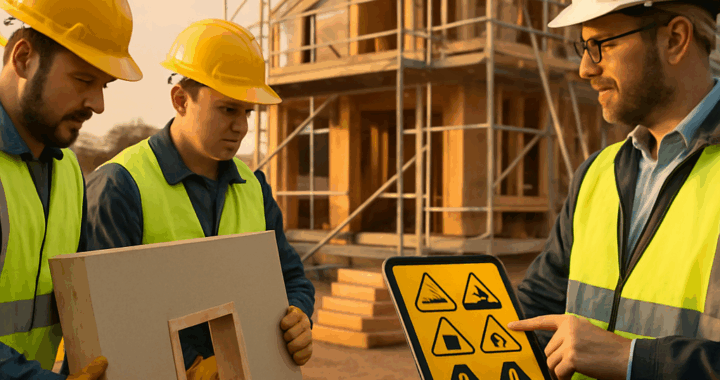Let’s explore a timely research topic that sits at the intersection of safety and housing. The focus is on residential safety on home construction projects. The goal is to develop a practical training module that helps identify the high risk areas where serious injuries are most likely to occur. When steps are not obvious, the study will present safer alternative approaches for installing components. This work aims to make home building safer for crews, homeowners, and everyone involved in the process.
Why residential safety matters on home building sites
Residential construction sites have unique safety challenges. Tight spaces, multiple subcontractors, evolving designs, and fast paced schedules can increase exposure to hazards. Common risk areas include working at height, heavy lifting and material handling, limited access and egress, and electrical and plumbing installations. By studying these sites specifically, we can tailor prevention strategies that fit real world conditions and improve safety outcomes on every project.
Study goals and design
The study will use a mix of qualitative and quantitative methods to map hazard patterns across typical home construction projects. The plan is to collect observed hazards, review site records, and gather insights from field crew leaders and workers. The findings will drive the development of a targeted training module and a risk based approach to safer installation practices.
Phase 1: Baseline assessment and data collection
In the first phase, researchers will compile a baseline picture of common hazards on residential sites. This includes reviewing incident reports, conducting site observations, and interviewing supervisors and workers to understand when and where injuries tend to occur.
Phase 2: Module development and risk framework
The second phase focuses on turning insights into a practical training module. A risk ranking framework will be created to identify critical points in typical home building sequences where safe installation requires special attention. The module will also propose safer alternatives that reduce exposure to hazards without compromising quality or schedule.
Phase 3: Pilot testing and evaluation
The final phase tests the module on select residential projects. Feedback from crews and project managers will be collected to measure knowledge gains, changes in behavior, and any reduction in near misses or injuries. The results will guide refinements before broader dissemination.
The training module features
The proposed training module will be designed for practical use on the job site. Core features include
- Realistic hazard recognition scenarios based on residential workflows
- Concise checklists tailored to home construction tasks
- Decision trees that guide safer installation sequences
- Guidance on safer methods for installing components that are tricky to do safely
- Tips for improving coordination among subcontractors and site supervisors
Alternative approaches for safer installation
When certain steps are risky or not obvious, the study will explore safer alternatives. This may include prefabrication or modular components to reduce on site handling, temporary supports and fall protection strategies, and revised installation sequences that minimize exposure to hazards. The aim is not only to point out risks but to offer workable, cost conscious ways to mitigate them without slowing the project down.
Evaluation and expected impact
Success will be measured through a mix of indicators. Expected outcomes include a reduction in near misses and injuries on pilot sites, improved safety awareness and engagement among workers, and potential cost savings from fewer delays and insurance claims. By integrating safety training with practical installation guidance, the study seeks to create lasting cultural and operational improvements on residential projects.
Residential safety is a critical frontier in construction safety research. By pinpointing high risk areas, building a focused training module, and offering safer installation options, we can make home construction safer for crews, homeowners, and communities.

